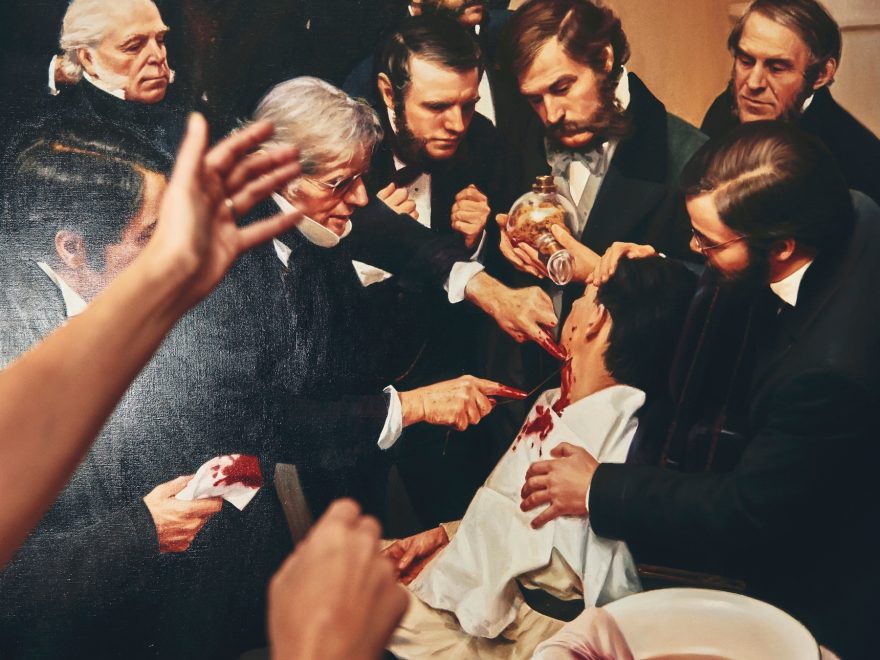Story by Doug Struck | Photos by Tony Luong
The Washington Post Aug 16, 2019
For stories and photos in The Washington Post package, “Science Trips” go to:
https://www.washingtonpost.com/graphics/2019/health/science/science-trip-12-sites-across-country/
Ether Dome
MEDICINE

The mummy had a long tour. He was hauled by stagecoach from New York to South Carolina, with people paying a dime or quarter to see him. Finally, back in Boston, they propped him against a wall in the high-domed operating room of Massachusetts General Hospital.
There he bore witness to the Bloody Spectacles. At 10 a.m. every Saturday, a patient would be strapped to a red velvet chair, gauze stuffed in their mouth, while a leg or an arm or even a breast was carved from their body. The screams, oh, the screams. Some said the operating theater was on the top floor to try to shield others below from the curdling cries.
Then the mummy saw something new.
The date was Oct. 16, 1846 — for once, a Friday. A printer named Gilbert Abbott was seated in the operating chair. But this time, a dentist put an unusual glass bulb filled with ether to the patient’s mouth. Abbott seemed to fall asleep, and a surgeon neatly sliced a tumor from his neck. When Abbott awoke, he said he felt only as if his neck had been scratched.
It was the first public demonstration of a medical epiphany, the birth of anesthesiology.
“One of the major innovations of medicine,” notes Susan Vassallo, a longtime hospital anesthesiologist, standing in the surgical amphitheater that became known as the Ether Dome. “This changed darkness to light.”
Until that moment, surgery was brutish, a last-ditch maneuver to remove gangrenous or crushed limbs and diseased organs. If patients did not die of the pain or loss of blood, they were likely to do so from infection. Germs were unknown.
The silent witness — named Padihershef, for that was what an Egyptologist finally read in hieroglyphics on his coffin — was sent on tour to raise money for the new hospital. He returned to join a replica of the Apollo Belvedere, a famous marble statue in the Vatican Palace, in the operating room. Their presence signaled that surgery was a scholar’s occupation, according to Sarah Alger, director of Mass General’s medical history museum. Doctors wore formal frock coats during an operation and were expected to spend their afternoons pursuing intellectual hobbies.
The pair remain in the amphitheater, next to a vivid 2001 painting of Abbott’s historic procedure that corrected errors in an 1880s depiction. What transpired on that day was “not humbug,” his surgeon announced to the physicians watching from steep, curved rows of seats. The patient was discharged some seven weeks later. In the end, it was consumption that killed him.
Years of collateral drama followed. Several people bitterly vied for credit for “inventing” the use of ether; three met grim deaths, including the man who became a chloroform addict, threw acid at women he considered prostitutes and slit his femoral artery in prison.
The Ether Dome is still used by medical students as well as open to the curious public. It is a mecca of sorts for some.
“I feel I ought to take my shoes off,” says an anesthesiologist visiting from Philadelphia. “I am standing on holy ground.”
Doug Struck is a former Washington Post foreign correspondent. He teaches journalism and is based in Boston.
Tony Luong is a photographer based in Boston, where he is surrounded by amazing scientific discoveries and a little too much sports.
